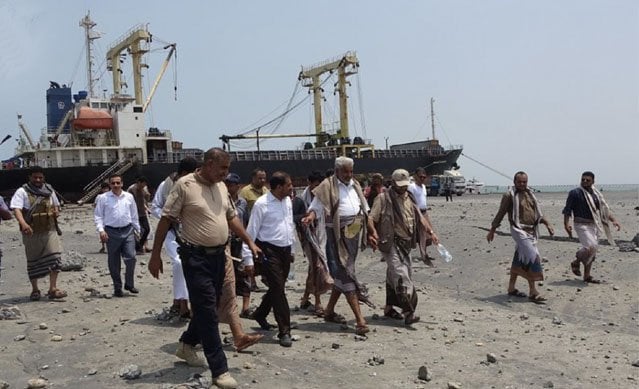Houthis Develop General Cargo Handling at Ras Isa
Houthis Expand Cargo Operations at Yemen's Ras Isa Port

Recent satellite imagery reveals significant developments at the Ras Isa coastal area in Yemen, where the Houthis have enhanced their capacity to manage general cargo. Historically a basic port primarily for oil tankers, Ras Isa is now witnessing an increase in shipping activity, including the construction of new jetty facilities. This shift comes amid ongoing disruptions at nearby ports due to military actions.
Ras Isa’s Transformation and Increased Activity
Once a rudimentary port limited to handling oil product tankers, Ras Isa has undergone a notable transformation. Previously, small to medium-sized tankers were moored with their sterns facing the beach, utilizing flexible piping to transfer oil into a limited pipeline network. However, recent satellite images indicate that the port has expanded its capabilities to accommodate general cargo operations. This change is likely a strategic response to the damage sustained by the nearby Salif port, which has traditionally handled general cargo.
In the past, Salif, located just five miles north of Ras Isa, was the primary hub for general cargo, featuring berthing for two vessels and a more extensive oil products tank farm. However, Salif has faced significant disruptions due to Israeli and American airstrikes in recent months, which have damaged its facilities. Despite these challenges, Salif appears to have resumed operations, with two bulk carriers recently spotted at the dockside. The MV Paras and MV Kashkar are among the vessels actively shuttling between Salif and Djibouti.
At Ras Isa, the increase in tanker activity is evident, with three tankers currently unloading cargo over the beach. These vessels, including the sanctioned tankers Sofia K, Charminar, and Dorin, signify a shift in shipping patterns, likely due to the damage at Hodeidah, another key port. The Houthis have also constructed new T-shaped jetties and expanded an artificial island, facilitating increased coastal shipping operations.
Regulatory Oversight and Ongoing Challenges
The surge in maritime activity at Ras Isa and Salif raises concerns regarding compliance with international regulations. According to UN Security Council Resolution 2216 (2015), all vessels entering these ports must obtain clearance from the United Nations Verification and Inspection Mechanism (UNVIM) based in Djibouti. However, there is currently no UNVIM presence at either port to verify compliance, leading to potential violations.
Reports indicate that multiple vessels have entered these ports without the necessary clearance, often resulting in intercepted illicit cargoes by National Resistance Forces operating in the Bab el Mandeb sea area. As of now, at least 17 vessels are anchored between Salif and Ras Isa, likely awaiting berth allocation. The situation underscores the complexities of maritime operations in a conflict zone, where regulatory oversight is crucial yet challenging to enforce.
As the Houthis continue to adapt their operations amid ongoing military pressures, the implications for regional shipping and security remain significant. The evolving landscape at Ras Isa and Salif port reflects broader trends in the conflict and the strategic maneuvers of the parties involved.
